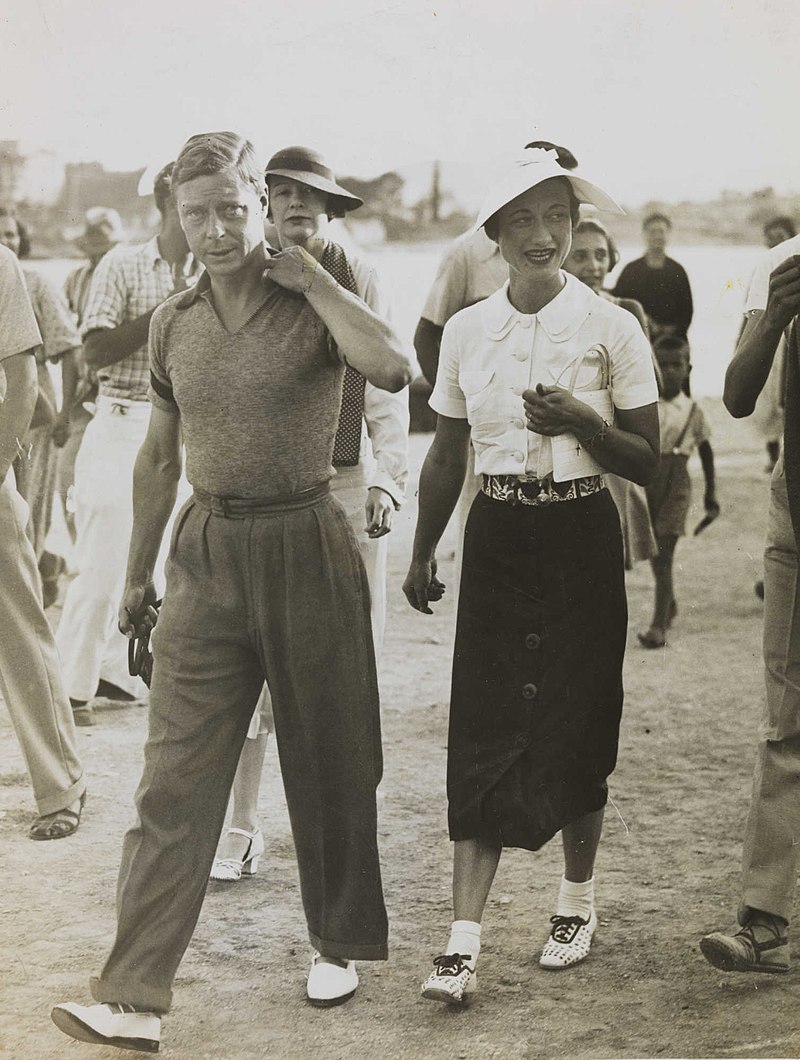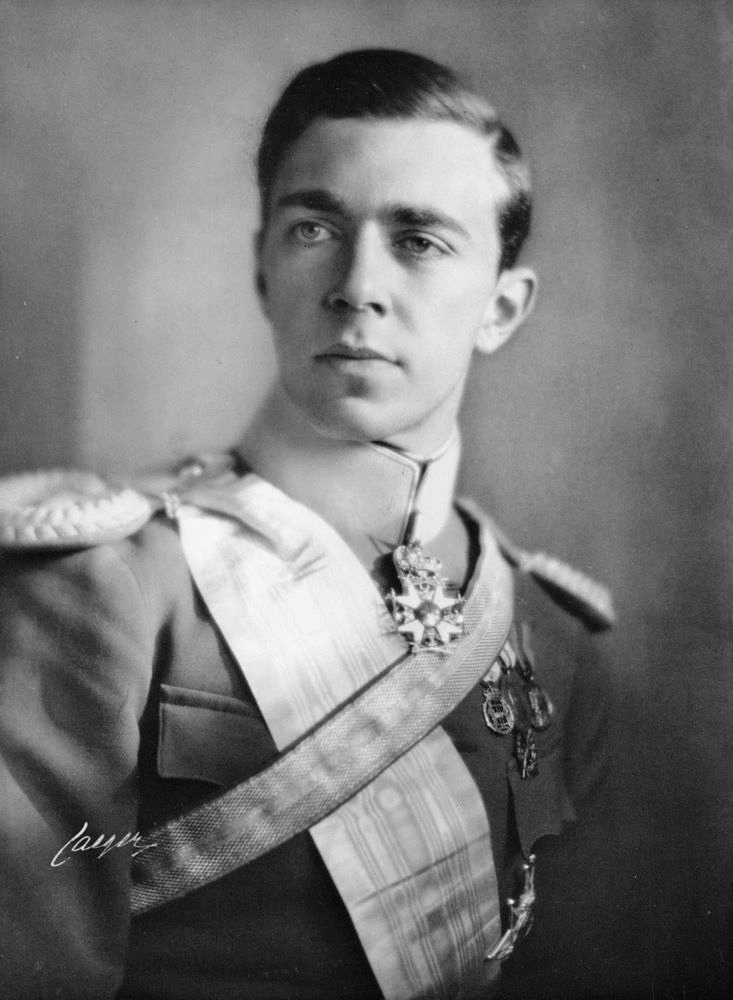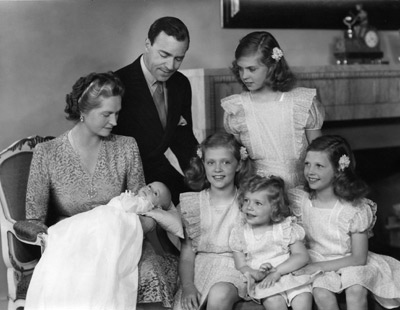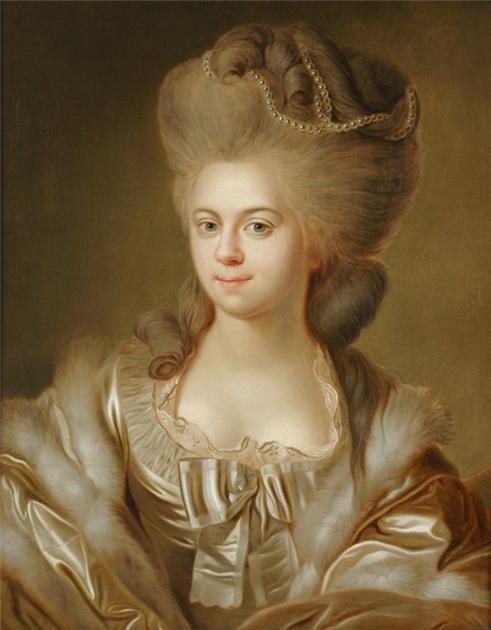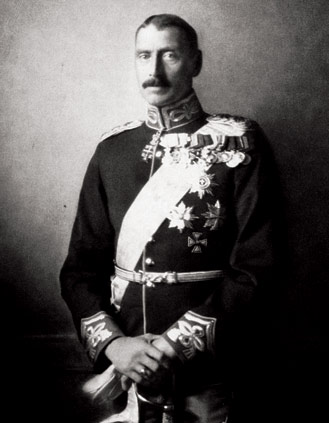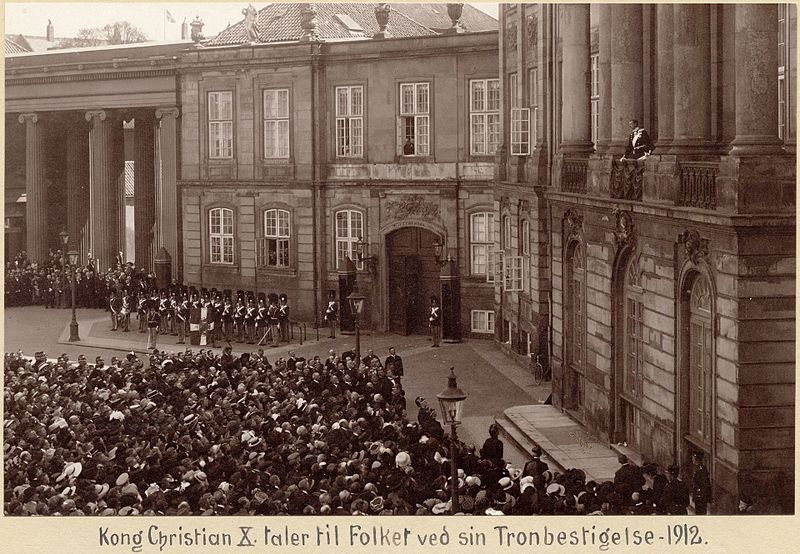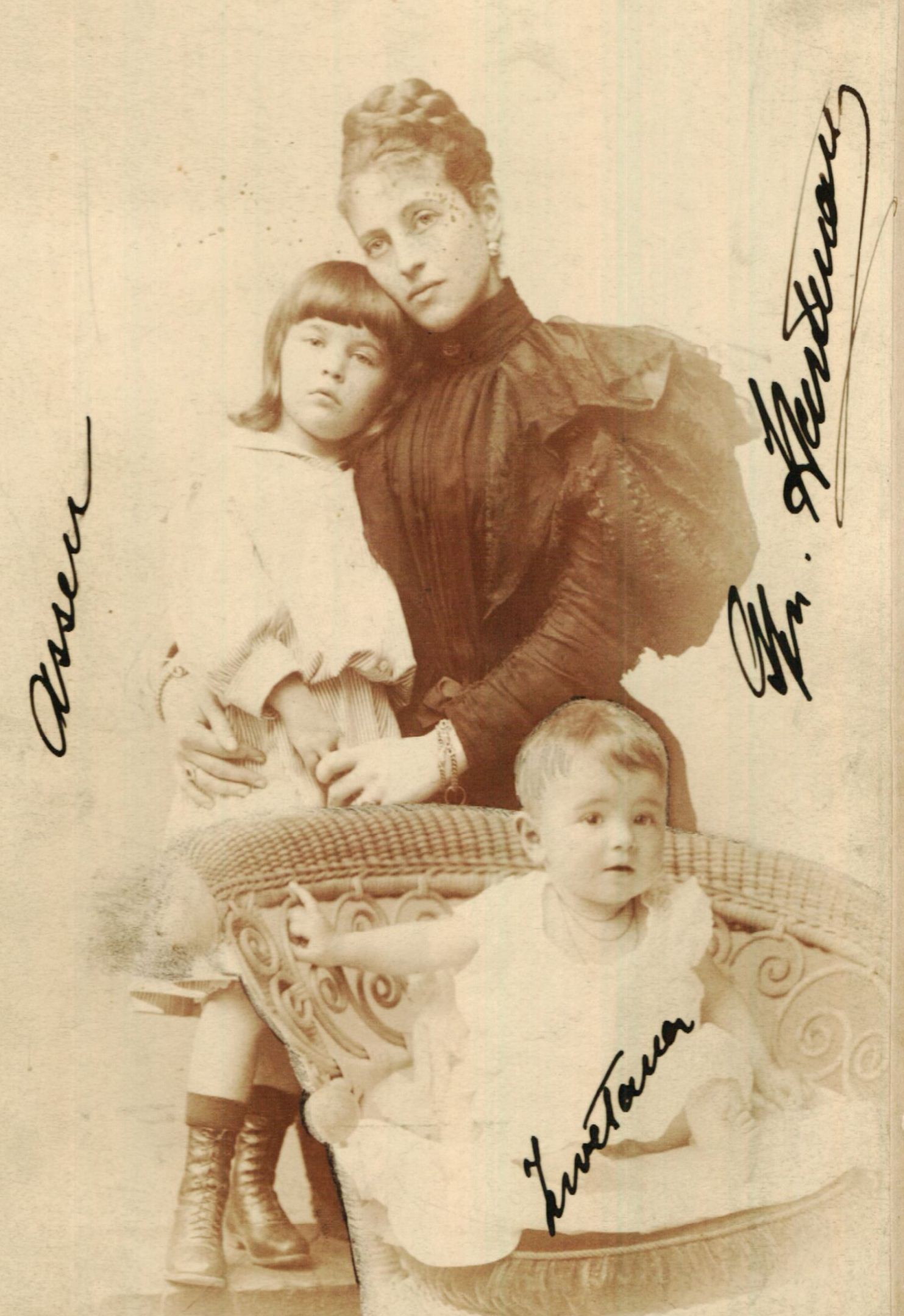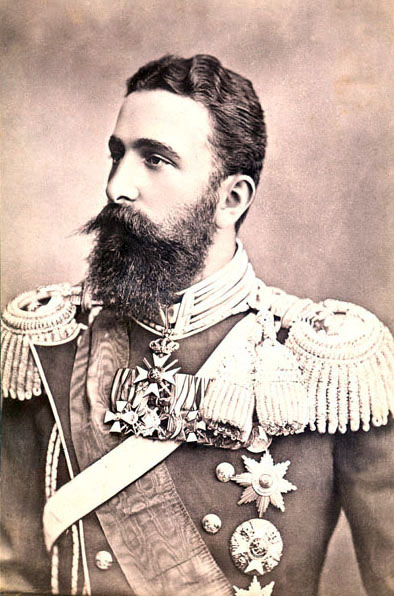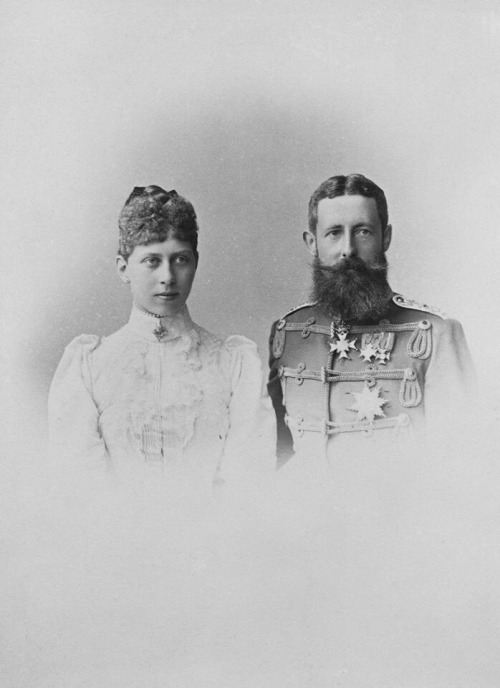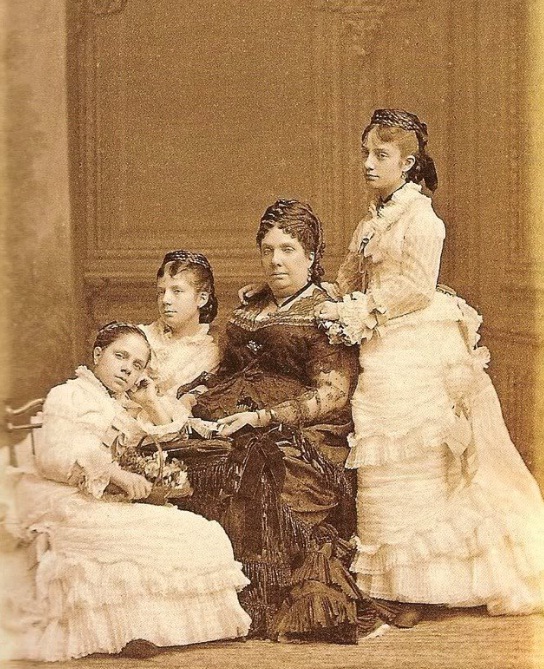by Susan Flantzer © Unofficial Royalty 2013

Princess Mary, Duchess of Gloucester and Edinburgh; Credit – Wikipedia
Princess Mary of the United Kingdom, the fourth daughter and eleventh of fifteen children of King George III of the United Kingdom and Charlotte of Mecklenburg-Strelitz, was born on April 25, 1776, at the Queen’s House (now Buckingham Palace) in London. Mary was christened on May 19, 1776, in the Great Council Chamber at St. James’s Palace, by Frederick Cornwallis, Archbishop of Canterbury.
Her godparents were:
- Landgrave Friedrich of Hesse-Kassel (her first cousin once removed)
- Duchess of Saxe-Gotha-Altenburg (born Princess Charlotte of Saxe-Meiningen, wife of her first cousin once removed)
- Duchess Charles of Mecklenburg-Strelitz (born Princess Friederike of Hesse-Darmstadt, her paternal aunt by marriage)

Princess Mary at age six; Credit – Wikipedia
Mary had fourteen siblings:
- King George IV (1762 – 1830), married Caroline of Brunswick-Wolfenbüttel, had issue: Princess Charlotte of Wales, who died in childbirth, as did her child
- Prince Frederick, Duke of York (1763 – 1827), married Frederica of Prussia, no issue
- King William IV (1765 – 1837), married Adelaide of Saxe-Meiningen, no surviving legitimate issue, but had illegitimate children
- Charlotte, Princess Royal (1766 – 1828), married King Friedrich I of Württemberg, no surviving issue
- Prince Edward, Duke of Kent (1767 – 1820), married Victoria of Saxe-Coburg-Saalfeld, had issue: Queen Victoria, the present British Royal Family are his descendants
- Princess Augusta Sophia (1768 – 1840), never married, no issue
- Princess Elizabeth (1770 – 1840), married Friedrich, Landgrave of Hesse-Homburg, no issue
- King Ernest Augustus I of Hanover, Duke of Cumberland (1771 – 1851), married Friederike of Mecklenburg-Strelitz; had issue
- Prince Augustus Frederick, Duke of Sussex (1773 – 1843), married twice, both in contravention of the Royal Marriages Act of 1772 (1) Lady Augusta Murray, had issue, marriage annulled (2) Lady Cecilia Buggin (later 1st Duchess of Inverness), no issue
- Prince Adolphus, Duke of Cambridge (1774 – 1850), married Augusta of Hesse-Kassel, had issue, the present British Royal Family are his descendants through his granddaughter Mary of Teck, who married King George V of the United Kingdom
- Princess Sophia (1777 – 1848), never married, possible illegitimate issue
- Prince Octavius (1779 – 1783), died in childhood
- Prince Alfred (1780 – 1782), died in childhood
- Princess Amelia (1783 – 1810), never married, no issue

Queen Charlotte in 1779 with her 13 eldest children; Credit – Wikipedia
The three younger sisters, Mary, Sophia, and Amelia, were educated together, spending much time with Charlotte de Montmollin, their French governess, who taught the sisters French and needlework. Jane Gomm joined the sisters in 1786 as an English teacher and then supervised their education. Mary, Sophia, and Amelia lived much of the time apart from their parents, sometimes with the younger brothers, at Kew Palace, but most often at Lower Lodge (now called Royal Lodge) at Windsor. The three younger sisters were much less disciplined than the three elder sisters. The artist John Singleton Copley discovered this when he painted Mary, Sophia, and Amelia with the family pets in 1785. The children, the dogs, and the parrots would not cooperate. Somehow, Copley managed to finish the painting, but returned to historical painting and never painted another portrait. The Copley painting is below.

Mary at left, age nine, with her two younger sisters, Sophia and Amelia, by John Singleton Copley, 1785; Credit – Wikipedia
Mary’s childhood was very sheltered. The living conditions of King George’s daughters came to be known as “the Nunnery.” None of the daughters was allowed to marry at the age when most princesses would marry. Perhaps this over-protection of King George III’s daughters was due to what happened to his sister Caroline Matilda when she married King Christian VII of Denmark. Christian’s mental illness led to Caroline Matilda having an affair, being caught, the execution of her lover, her exile, and her early death from scarlet fever at age 23. The story was told in several novels, including Per Olov Enquist’s The Visit of the Royal Physician (1999) and in the Danish film A Royal Affair (2012). Stella Tillyard also covers Caroline Matilda’s affair in her nonfiction book A Royal Affair: George III and His Scandalous Siblings (2006). Despite what happened to their aunt, the sisters longed to escape from “the Nunnery.”

Princess Mary in 1797; Credit – Wikipedia
Around 1796, Mary fell in love with her second cousin, Prince Frederick of Orange-Nassau, the youngest son of King George III’s first cousin William V, Prince of Orange and Stadtholder of the Dutch Republic, when his family lived in exile in London. There was no marriage because King George III mandated that his oldest daughters be married first. In 1799, Prince Frederick died of an infection while serving in the army, and Mary was allowed to go into mourning for him.

Prince Frederick of Orange-Nassau, Mary’s would-be bridegroom, circa 1790; Credit – Wikipedia
Before King George’s first bout with what probably was porphyria in 1788, he had told his daughters that he would take them to Hanover to find them husbands. Further bouts occurred in 1801 and 1804 and prevented talk of marriage for his daughters. Queen Charlotte feared that the subject of marriage, which had always bothered her husband, would push him back into insanity. She was stressed by her husband’s illness and wanted her daughters to remain close to her. The sisters – Charlotte, Augusta, Elizabeth, Mary, Sophia, and Amelia – continued to be over-protected and isolated. This restricted them from meeting eligible suitors of their own age.

Princess Amelia in 1807; Credit – Wikipedia
Mary had a very close relationship with her youngest sibling, Princess Amelia, and jokingly called her “Mama’s Tool” because she was so obedient to her mother. By 1810, Amelia was fatally ill with pulmonary tuberculosis. She then developed erysipelas, an acute skin infection. Before the advent of antibiotics, erysipelas frequently resulted in death. Amelia’s case of erysipelas was particularly severe, with the rash literally from her head to her toes. Mary nursed her sister through her last illness and was at Amelia’s bedside when she died on November 2, 1810, at the age of 27. Mary deeply mourned Amelia’s premature death for many years.
Eventually, three of the six sisters married, and one of them was Mary. Charlotte, Princess Royal married at age 29, a rather late age for marriage, but Elizabeth was 48 and Mary was 40 at the time of their marriages. On July 22, 1816, at the Chapel Royal in St James’s Palace, Princess Mary married her paternal first cousin, Prince William Frederick, Duke of Gloucester and Edinburgh, the son of King George III’s brother, Prince William Henry, Duke of Gloucester and Edinburgh. Prince William was six months older than Mary and had become Duke of Gloucester and Edinburgh upon his father’s death in 1805. William had been encouraged to remain single so that there might be a suitable match for Princess Charlotte of Wales, the heiress to the throne, in case no foreign prince proved suitable. However, ten weeks earlier, Princess Charlotte married Prince Leopold of Saxe-Coburg-Saalfeld. As a great-grandson of King George II, William was styled His Highness Prince William of Great Britain. On the day of his marriage, Mary’s brother, The Prince Regent (the future King George IV), granted William the style of His Royal Highness.

Prince William Frederick, Duke of Gloucester and Edinburgh; Credit – Wikipedia
Prince William attended Trinity College (University of Cambridge) and was granted a Master of Arts degree in 1790. From 1811 until his death, he was Chancellor of the University of Cambridge. He entered the British Army at the age of thirteen in 1789 and quickly ascended the ranks: Major-General in 1796, Lieutenant-General in 1799, General in 1808, and Field-Marshal in 1816. In 1799, he participated in the Anglo-Russian invasion of Holland as a Major-General of the British Army, under the command of his cousin, Prince Frederick, Duke of York.
Mary and William’s marriage was childless, and the couple lived at Gloucester House in Piccadilly, London, and Bagshot Park, now the home of Prince Edward, Duke of Edinburgh. Although William wanted to marry Mary, he often treated her unkindly. Mary’s meddling sister-in-law, Princess Sophia Matilda of Gloucester, made her situation even more difficult.
William died after eighteen years of marriage at the age of 58 on November 30, 1834, at Bagshot Park. Mary was a great favorite with all the members of the royal family, particularly her niece, Queen Victoria. She was renowned for her charm and kindness. Princess Mary, Duchess of Gloucester and Edinburgh died at age 81, the longest-lived and the last survivor of her parents’ fifteen children, on April 30, 1857, at Gloucester House in London. She also has the distinction of being the only child of King George III to be photographed (see below). Princess Mary was buried with her husband in the Gloucester Vault at St. George’s Chapel, Windsor Castle.
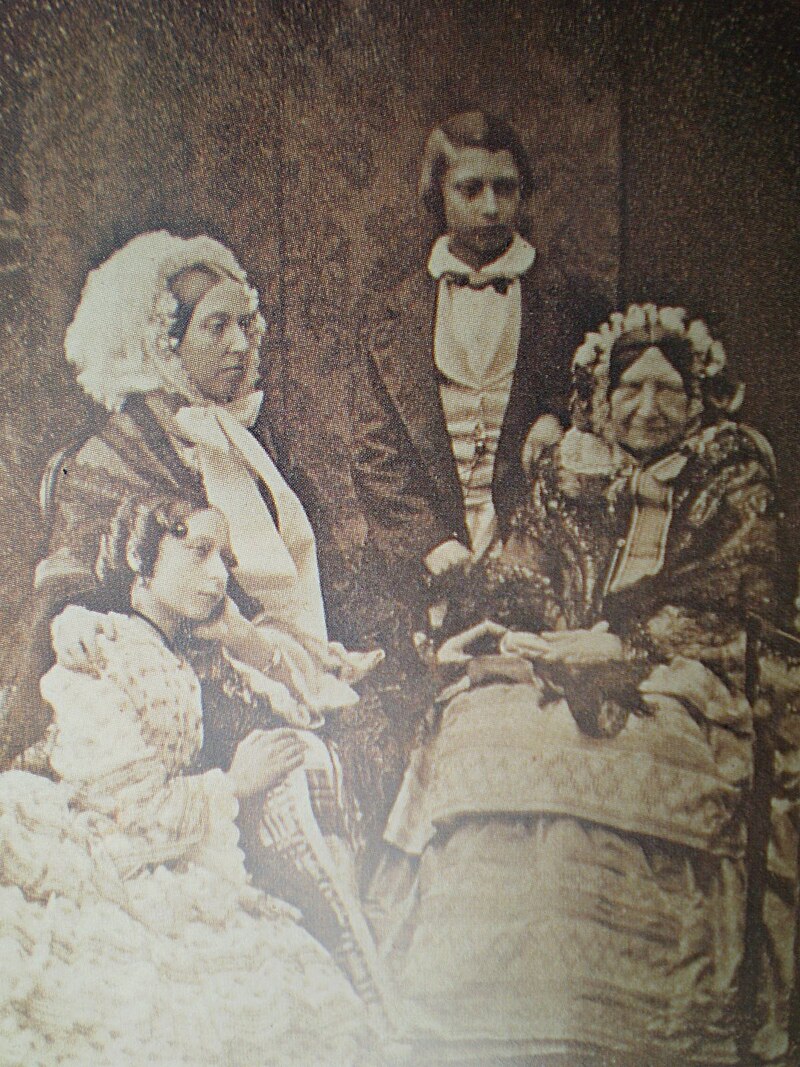
Princess Mary at age 80 on the right with her niece Queen Victoria and two of Victoria’s children, Princess Alice and the Prince of Wales (future Edward VII); Credit – Wikipedia
This article is the intellectual property of Unofficial Royalty and is NOT TO BE COPIED, EDITED, OR POSTED IN ANY FORM ON ANOTHER WEBSITE under any circumstances. It is permissible to use a link that directs to Unofficial Royalty.
Works Cited
Fraser, Flora. Princesses: The Six Daughters of George III. New York: Alfred A. Knopf, 2004. Print.
“Prince William Frederick, Duke of Gloucester and Edinburgh.” Wikipedia. N.p.: Wikimedia Foundation, 2017.
“Princess Mary, Duchess of Gloucester and Edinburgh.” Wikipedia. N.p.: Wikimedia Foundation, 2017.
Van Der Kiste, John. The Georgian Princesses. Phoenix Mill: Sutton Publishing, 2000. Print.
Williamson, David. Brewer’s British Royalty. London: Cassell, 1996. Print.





